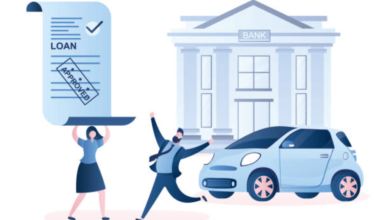
What is a Stafford Loan: A Comprehensive Guide
In higher education financing, Stafford loans are pivotal in helping students achieve their academic dreams. These loans, named after the late Senator Robert Stafford, have been a reliable source of financial aid for countless students pursuing college and university degrees. In this article, we’ll delve into the intricacies of what is a Stafford loan, exploring their types, eligibility criteria, application process, benefits, and considerations. By the end, you’ll thoroughly understand what Stafford loans.
Stafford loans are federal student loans provided by the U.S. Department of Education to help students cover higher education costs. Options, making them a preferred choice for many students and their families.
Types of Stafford Loans
Subsidized Stafford Loans
One of the most significant benefits of these loans is that the government pays the interest while the student.
Unsubsidized Stafford Loans
Students are responsible for paying the interest throughout the life of the loan. This interest can be deferred while the student is in school but will be capitalized if not paid.
Eligibility Criteria
Undergraduate Students
To be eligible for Stafford loans as in a qualifying degree program. You also need to be a U.S. citizen or an eligible non-citizen and maintain satisfactory academic progress.
Graduate and Professional Students
Graduate and professional students are eligible for half-time in an eligible program. Citizenship and academic progress requirements also apply.
Application Process
Filling out the FAFSA
You must complete the Free Application for Federal Student Aid (FAFSA) to access Stafford loans. This form gathers information about your family’s financial situation and determines your eligibility for various financial aid forms.
Receiving the Financial Aid Award Letter
After submitting the FAFSA, you’ll receive a financial aid award letter from your chosen institution. Financial aid you’re eligible to receive, including Stafford loans.
Accepting or Declining the Loan
You have the option to accept the full amount or a partial amount of the Stafford loan offered. Remember, only borrow what you truly need to cover your educational expenses.
Interest Rates and Repayment
Interest Rates of Subsidized Stafford Loans
The interest rates for subsidized Stafford loans. These rates are fixed and may vary depending on the year in which the loan was disbursed.
Interest Rates of Unsubsidized Stafford Loans
Unsubsidized Stafford loans have slightly higher interest rates than subsidized loans. These rates are also fixed like subsidized loans and depend on the disbursement year.
Repayment Plans
Stafford loans offer various repayment plans, including standard repayment, graduated repayment, income-driven repayment, and extended repayment. Choose the plan that best suits your financial situation.
Benefits of Stafford Loans
Subsidized Interest
The government covers the interest for subsidized loans during certain periods, helping students avoid accruing additional debt while in school.
Grace Period
Stafford loans offer a grace period after graduation, during which you don’t need to make payments. This grace period provides a smooth transition into the workforce.
Considerations Before Taking a Stafford Loan
Borrowing Wisely
While Stafford loans offer favorable terms, borrowing only what you need to minimize post-graduation debt is essential.
Financial Literacy
Financial literacy can prevent future financial challenges.
Exploring Other Financial Aid Options
Consider scholarships, grants, and work-study opportunities before relying solely on loans to fund your education.
Stafford Loans vs. Other Student Loans
Perkins Loans
Perkins loans are another federal loan option with fixed interest rates, but they are based on exceptional financial need.
Impact on Financial Aid Package
Receiving a Stafford loan might affect your eligibility for certain need-based grants or scholarships. Consult your financial aid office to understand the broader impact on your financial aid package. Read more…
Conclusion
In conclusion, what is a Stafford loan serve as a lifeline for students pursuing higher education. They offer various benefits, including subsidized interest and flexible repayment options. However, it’s crucial to approach these loans carefully and clearly understand their impact on your financial future.
FAQs
- Are Stafford loans need-based? No, while subsidized Stafford loans are need-based, unsubsidized loans are available to both those with and without demonstrated financial need.
- Can I apply for a Stafford loan if I have bad credit? Stafford loans do not require a credit check, so your credit history will not affect your eligibility.
- Is there a maximum loan amount for Stafford loans? The maximum loan amount depends on your academic level, dependency status, and other factors.
- When do I start repaying my Stafford loan? Repayment typically begins six months after you graduate, leave school, or drop below half-time enrollment.
- Can I change my repayment plan after graduation? You can switch to a different repayment plan if your financial situation changes.



